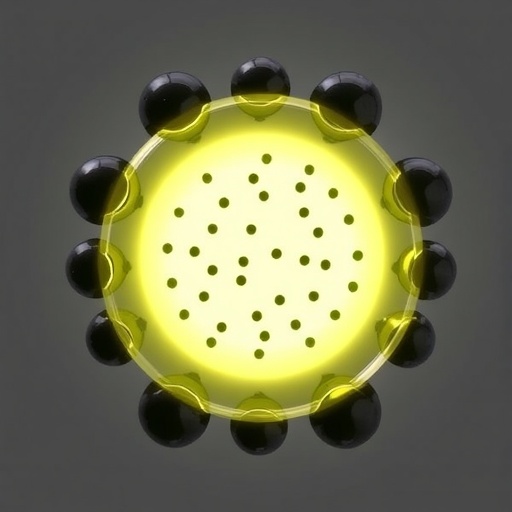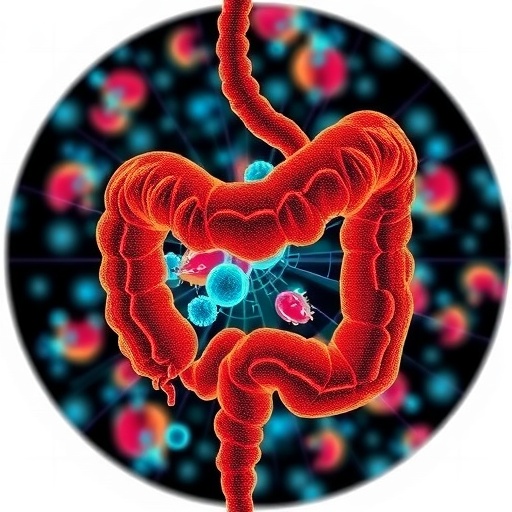In an era where environmental health is increasingly paramount, the persistent challenge of nitrate contamination in water sources demands innovative solutions. Elevated nitrate levels, predominantly stemming from agricultural runoff, industrial effluents, and sewage discharge, pose severe threats to aquatic ecosystems and human health alike. These pollutants contribute to eutrophication, disrupting aquatic life, and act as precursors for methemoglobinemia—a potentially fatal blood disorder in infants. Traditional nitrate remediation practices, involving biological denitrification, membrane technologies, and adsorption, although effective in certain contexts, often face limitations such as high operational costs, energy intensity, and the risk of secondary pollution. Electrocatalytic denitrification has recently emerged as a promising alternative, yet its widespread application is hindered by the tendency of catalysts to favor ammonia production over environmentally benign nitrogen gas, perpetuating risks associated with ammonia toxicity and costly downstream treatments.
Addressing this critical bottleneck, a team of researchers from Jiangnan University has pioneered an advanced electrocatalytic system that revolutionizes nitrate conversion by harnessing dual single-atomic catalytic sites embedded within double-shelled mesoporous carbon spheres. This novel catalyst architecture, coined FeNC@MgNC-DMCS, orchestrates a highly selective transformation of nitrate into harmless nitrogen gas (N₂), circumventing the undesirable formation of ammonia. Detailed investigations reveal that the spatially confined iron and magnesium atomic sites mediate distinct yet complementary functions within the catalytic framework, enabling unprecedented control over reaction pathways.
The inner shell of the double-shelled carbon spheres is densely decorated with iron-nitrogen (Fe–N₄) centers, which serve as active sites facilitating nitrogen-nitrogen bond formation. This molecular coupling step is pivotal for steering the reduction process towards nitrogen gas generation. Surrounding this core, the outer shell incorporates magnesium-nitrogen (Mg–N₄) sites, which introduce a unique proton modulation effect by creating a “proton fence.” This proton fence delicately balances the local proton concentration, restraining excessive hydrogenation tendencies that would otherwise lead to ammonia synthesis. This architectural innovation addresses a fundamental mechanistic challenge in nitrate electroreduction, achieving both high activity and superior selectivity within aqueous environments.
Experimental validation of FeNC@MgNC-DMCS underscores its remarkable nitrate removal capacity, achieving conversion rates of approximately 92.8% coupled with an exceptional nitrogen selectivity of 95.2%. Such performance metrics surpass those of conventional single-shelled or monometallic catalyst analogs, highlighting the synergy introduced by the dual-site configuration. In situ characterization techniques, including mass spectrometry and infrared spectroscopy, have delineated the reaction intermediates and pathways, confirming the predominance of nitrogen-nitrogen coupling over competing hydrogenation processes at the molecular level. This mechanistic insight elucidates how the dual atomic sites function in tandem to channel reaction dynamics toward the ecologically preferred nitrogen gas.
Beyond laboratory batch tests, the catalyst’s robustness was rigorously assessed under continuous operation within flow cell setups simulating real-world wastewater conditions. Long-term stability trials extending beyond 250 hours demonstrated sustained nitrate removal efficiencies exceeding 90%, with nitrogen selectivity maintained above 93%. These findings affirm the material’s durability and efficacy under dynamic operational parameters, an essential criterion for scaling electrocatalytic technologies in environmental remediation. Furthermore, elemental leaching analyses confirmed minimal release of iron and magnesium species, addressing potential environmental safety concerns and compliance with stringent World Health Organization standards for drinking water.
The design principles behind FeNC@MgNC-DMCS reflect a strategic convergence of materials science and catalysis. The sequential modular assembly combined with pyrolysis techniques enabled the precise fabrication of hierarchically structured carbon spheres, spatially decomposing functional sites to resolve conflicting catalytic demands. By harnessing single-atom site engineering, the researchers tuned electronic and chemical environments at the atomic scale, achieving unprecedented reaction selectivity that conventional heterogeneous catalysts cannot replicate. This breakthrough showcases how fundamental advances in nanoarchitectonics can unlock sustainable chemical transformations critical for addressing global environmental challenges.
Professor Hua Zou, co-corresponding author of the study, emphasizes the transformative implications of these findings: “Our approach, which introduces a magnesium-based proton fence enveloping iron catalytic centers, effectively curtails side reactions responsible for ammonia formation. This atomic-level control exemplifies a paradigm shift in electrocatalytic nitrate remediation, enabling practical solutions that are both highly effective and environmentally responsible.” Such insights resonate broadly across the field of electrocatalysis, inspiring new directions for catalyst design where controlling proton availability and intermediate binding is critical for reaction outcome modulation.
The broader impact of this research extends well beyond nitrate pollution mitigation. The innovative catalyst design offers a modular platform adaptable to other challenging multi-electron, multi-proton transfer reactions where selectivity reigns as a primary concern. Potential applications span from sustainable energy storage and conversion to chemical manufacturing processes requiring fine-tuned product distributions. The work illustrates the power of combining hierarchical carbon architectures with meticulously designed single-atom catalytic sites to reconcile competing reaction pathways, thus paving the way for advanced catalytic technologies aligned with circular economy principles.
As nitrate contamination continues to escalate in intensity and geographic scope due to expanding agricultural activities and urbanization, scalable and cost-effective solutions like FeNC@MgNC-DMCS are urgently needed. Its outstanding stability, selectivity, and environmental compatibility position this catalyst as a viable candidate for integration into existing water treatment infrastructures, particularly in regions grappling with severe nitrate pollution. Moreover, the research underscores the critical role of interdisciplinary approaches that combine catalysis, materials science, and environmental engineering to devise impactful solutions for global water sustainability challenges.
Published in the international multidisciplinary journal Eco-Environment & Health on July 23, 2025, this pioneering work not only contributes valuable knowledge to the scientific community but also provides a compelling blueprint for future endeavors aimed at harnessing electrocatalysis for environmental remediation. Backed by support from the National Natural Science Foundation of China, the study stands as a testament to how targeted fundamental research can translate into transformative environmental technologies that safeguard public health and ecosystem integrity.
In summary, the FeNC@MgNC-DMCS catalyst represents a significant advance in electrocatalytic nitrate denitrification, deftly balancing activity, selectivity, and durability through innovative atomic-scale engineering. This achievement marks a critical step toward realizing sustainable water purification methods that minimize environmental footprints while addressing urgent pollution concerns. As the global community strives for cleaner water resources and healthier ecosystems, technologies such as these are poised to play a central role in shaping resilient, adaptive environmental management strategies.
Subject of Research: Not applicable
Article Title: Selective electrocatalytic denitrification to N2 via dual single-atomic sites on double-shelled mesoporous carbon spheres
News Publication Date: 23-Jul-2025
Web References:
https://doi.org/10.1016/j.eehl.2025.100172
References:
10.1016/j.eehl.2025.100172
Image Credits: Eco-Environment & Health
Keywords: Research methods
Tags: advanced water treatment methodsagricultural runoff pollutionammonia toxicity reductiondouble-shelled carbon sphereselectrocatalytic denitrification technologyenvironmental health innovationseutrophication and aquatic ecosystemsJiangnan University researchnitrate contamination solutionsnitrate-to-nitrogen conversionnovel catalyst architecturessustainable catalyst design





